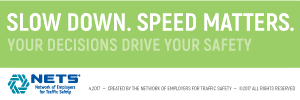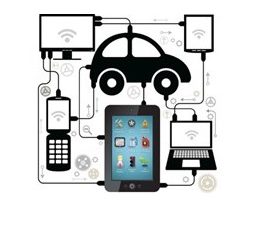This week is Drive Safely Work Week™ (DSWW), an annual campaign sponsored by the Network of Employers for Traffic Safety (NETS). Safe driving should be a habit. However, in case issues do arise with your fleet staff, here is some data on how poor driving affects your bottom line. There is also a way to monitor driver behavior for crafting policies, training and even incentives.This week is Drive Safely Work Week™ (DSWW), an annual campaign sponsored by the Network of Employers for Traffic Safety (NETS). Safe driving should be a habit. However, in case issues do arise with your fleet staff, here is some data on how poor driving affects your bottom line. There is also a way to monitor driver behavior for crafting policies, training and even incentives.
NETS highlights the business costs of unsafe driving in 2015:
• $8.4 billion from speeding violations
• $8.2 billion from distracted driving incidents
• $6 billion from drinking-related events
• $4.9 billion from not wearing a seatbelt
The National Safety Council shows the cost of a work-related crash:
• $24,000+ per incident
• $125,000+ if an employee is injured

• 40% consumption increase from hard braking and jack-rabbit or hard accelerations (increase speed by 7 mph or more in one second)
• 20% consumption increase from speeding (between 55 mph and 75 mph)
• 25-50% more of a gallon of fuel per hour excessive idling (source)
• 50% more fuel could be used by an engine out of tune
Lastly, unsafe driving and missed appointments can tarnish your company’s reputation. What is the cost of unhappy customers or prospects? While there is no accepted cost or statistic, below are two findings:
• $537 billion, approximately, is lost to unhappy customers switching businesses (source)
• $7.6 million or more per company spent in extra wages to make up for a poor reputation (source)
These are huge financial impacts on your business. Having hard data helps make correction and training easier. Vehicle telematics provides the stream of information on driver behavior and vehicle health. For example, FleetOutlook™has a scorecard report which shows speed violations, hard braking and aggressive acceleration. Fleet managers are also able to review breadcrumb details to gain a fuller picture of events. Telematics solutions typically offer real-time alerts when a vehicle reaches a preset parameter, such as over 80 mph.
With a direct connection to the engine, you have access to the onboard diagnostics system which provides data used for proactive maintenance or troubleshooting when you are notified of an engine issue, such as the check engine light. Also, many companies have begun pairing their telematics systems with in-cab cameras to capture visual evidence as well.
Read more at http://www.calamp.com/blog/content/poor-driving-habits-cost-your-company-money












